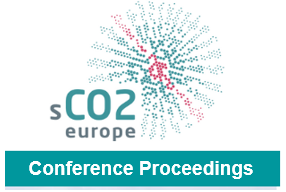Modelling and performance analysis of a supercritical CO2 system for high temperature industrial heat to power conversion at off-design conditions
Industrial processes are currently characterized by thermal energy losses through high temperature exhausts or effluents (above 300°C) that, on a global scale, account for nearly 11.4% of their primary energy consumption, namely 12.1 EJ. For these high temperature exhausts, conventional waste heat to power conversion systems based on bottoming thermodynamic cycles are not very suitable since most of the state of the art working fluids are not able to perform safely and efficiently at high temperatures. Supercritical Carbon Dioxide (sCO2) power systems allow to overcome these limitations because of the chemical and thermo-physical properties of the working fluid. In order to provide insights on the behavior of sCO2 systems, this paper presents the development of a one-dimensional numerical model of a low capacity (50 kWe) simple regenerated system for medium to high temperature waste heat recovery applications. The unit is equipped with single-shaft radial turbomachinery and different heat exchanger technologies such as micro-tube, printed circuit, plate, etc. Flue gas and water are used as heat source and sink respectively. At nominal conditions, i.e. for a flue gas mass flow rate of 1.0 kg/s at 650°C, the unit operates at a cycle pressure ratio of 1.7, generating 50 kWe with a thermal efficiency of 20%. The paper first discusses the modelling methodology, including turbomachinery and heat exchanger models implementation, and then assesses the steady-state performance of the unit at design and off-design operating conditions. From the simulations carried out operating maps of the unit have been obtained to form the baseline for the setting up of control strategies for the sCO2 system. The results show that the system can generate up to 75 kWe for a heat source mass flow rate of 1.2 kg/s and heat source temperature of 700°C.
Vorschau

Zitieren
Zitierform:
Marchionni, Matteo et al. (2019): Modelling and performance analysis of a supercritical CO2 system for high temperature industrial heat to power conversion at off-design conditions. In: 3rd European Conference on Supercritical CO2 (sCO2) Power Systems 2019: 19th-20th September 2019. S. 281–289. Online unter: https://nbn-resolving.org/urn:nbn:de:hbz:464-20191004-145238-6.
Zitierform konnte nicht geladen werden.
Rechte
Nutzung und Vervielfältigung:
Dieses Werk kann unter einer Creative Commons Namensnennung 4.0 Lizenz (CC BY 4.0)
Creative Commons Namensnennung 4.0 Lizenz (CC BY 4.0)
genutzt werden.
